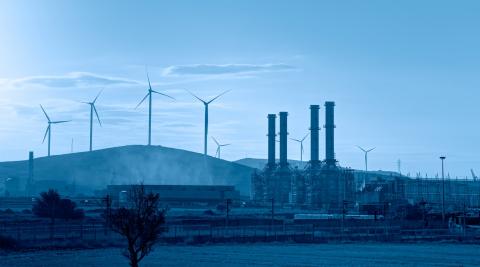Reactions to the heat wave affecting Spain these days
Spain is suffering these days a new heat wave that, according to experts, will last at least until Monday and it is not clear when it will end.
Cambiado el día previsto de finalización de la ola de calor con las nuevas previsiones de AEMET.

Ernesto Rodríguez - ola de calor EN
Ernesto Rodríguez Camino
Senior State Meteorologist and president of Spanish Meteorological Association
The current heat wave that is dramatically affecting Spain is a preview of the climate that awaits us as a consequence of the unstoppable increase in greenhouse gas concentrations in the atmosphere due mainly to the widespread - and still growing - use of fossil fuels (coal, oil derivatives and natural gas).
Estimates for the evolution of heat waves made with the help of climate models show increasingly frequent, intense and long heat waves, depending on the degree of increase of these three characteristics, depending on the path followed by global greenhouse gas emissions.
At present, the attribution of an extraordinary event - such as the current heat wave - to current anthropogenic climate change can only be made in terms of a change in the probability of its occurrence and after numerical simulations and comparisons with real observations.
Surely, the studies that will be carried out when the heat wave is over and all the data are analyzed will indicate that, with the current perturbed climate, the probability of occurrence of this event has increased with respect to the probability of occurrence in a hypothetical climate not perturbed by human action. More seriously, the probability of similar events will continue to increase if the causes of current climate change, i.e., increasing greenhouse gas emissions, are not controlled.
Marc Santandreu - ola de calor EN
Marc Santandreu
Physicist and meteorologist at RTVE
There is a lot of criticism on social networks that we are giving so much importance to the heat these days because 'in summer it has always been hot'. But the truth is that it is not, or at least not so intense.
We must remember that a heat wave is an extreme phenomenon in which temperatures are exceeded that are very uncommon and, therefore, this heat is uncommon.
Specifically, this heat wave is marked by an extremely warm air mass that is reaching temperatures of more than 30 ºC at about 1,500 meters above sea level, where orographic peculiarities have little to say. Values that can make it the most intense, along with the one we experienced last August. This is a fact to which, by the way, we will have to get used to and adapt. The reason, whether we like it or not, is called global warming.
Ricardo Torrijo - ola de calor EN
Ricardo Torrijo
Meteorologist of the National Forecasting Center of AEMET
The heat wave that began last Saturday July 9 is associated with a fairly stable weather situation, with a ridge extending from North Africa, thermal, at low levels and high pressure over the peninsula, as well as an isolated depression in height (DANA) centered to the west of the peninsula. This situation, along with strong solar insolation and persistence, is resulting in high temperatures have been rising progressively, both maximum and minimum, reaching its peak yesterday Wednesday and today Thursday.
The next displacement of the DANA towards the northeast could begin, from the beginning of next week, to alleviate the situation in the far west and northwest peninsular. However, the thermal dorsal will remain towards the east peninsular and could even return to settle again in much of the peninsula. Therefore, it is not clear when this situation may end. In fact, the latest runs of the numerical models (the models are complex computer programs where the behavior of the atmosphere is simulated by means of an infinite number of calculations made by a supercomputer), do not point out when the situation may end, since successive runs extend it more and more in time.
One of the characteristics of this situation is its great persistence and if it continues at this rate it could become one of the longest since 1975 (the year since there are studies on these episodes). Another point of interest of this heat wave is its extension, since it is exceptional that it affects so many regions. On the other hand, it is also a heat wave that has given records of very high maximum and minimum temperatures, even in some reference observatories with long series. However, from the point of view of thermal records reached, even being a wave of very high temperatures, it does not stand out as much as for the two previous characteristics.
In any case, before making all these assessments, it will be necessary to wait for the end of the current heat wave, whose end is still uncertain and whose consequences are being felt by the population, since the negative effects on comfort and health of extreme temperatures are well known, as well as for the environment; and for the stress they can produce in various plant and animal species and for the increased risk of fires associated with high temperatures and dryness.



